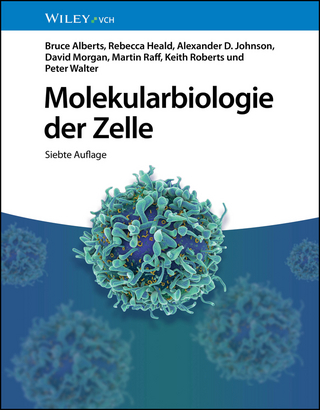
Biotechnological Utilization of Mangrove Resources
Academic Press Inc (Verlag)
978-0-12-819532-1 (ISBN)
Divided into three main parts, Biotechnological Utilization of Mangrove Resources first provides a broad introduction into mangrove ecology. Subsequent chapters discuss the biodiversity of mangroves, including the diverse nature of the organisms within the mangroves themselves. The final part pays special attention to biotechnological utilization of mangroves. Topics such as antimicrobial activity of mangrove-derived products, anti-oxidant activity of mangrove derived products and pharmaceutical applications, are covered in detail.
Biotechnological Utilization of Mangrove Resources brings the latest research and technologies in mangrove biology into one platform, providing readers with an up-to-date view on the area. This would serve as an excellent reference book for researchers and students in the field of marine biology especially interested in mangrove ecosystems.
Dr Jayanta Kumar Patra, MSc, PhD, PDF, is an Associate Professor at Dongguk University, Republic of Korea. He has around 14 years of research and teaching experience in the fields of pharmacology and nano-biotechnology. His current research focuses on nanoparticle synthesis by green technology methods and associated biomedical applications: green synthesis of silver, gold, iron, calcium, phosphorous nanoparticles using food waste, agricultural waste and plant materials and evaluation of their antibacterial, antioxidant and cytotoxicity potential. He also focuses on the antibacterial synergistic potential of nanoparticles and conjugation with different antibiotics, drugs etc. along with ethno-medicinal potential of plants. Dr Patra has published >150 articles in various national and international peer-reviewed journals, including Materials Science and Engineering C, Nanomedicine: Nanotechnology, Biology, and Medicine, International Journal of nanomedicine and Journal of Nanobiotechnology and around 35 book chapters. He is editor of 16 books covering nanotechnology in pharmacology, biomedicine and food sciences, including titles published with Apple Academic Press, CRC Press and Springer. He is currently also an editorial board member of >10 international journals, including BMC Complementary and Alternative Medicine, Frontiers in Nanotechnology, Frontiers in Cellular and Infection Microbiology, and Frontiers in Microbiology. Dr. Mishra received his PhD in 2010 from North Orissa University and his thesis focused on Microbial Diversity in Mangroves. He has 17 journal publications and has co-authored 3 book chapters. Dr. Hrudayanath Thatoi is Director of the Centre for Industrial Biotechnology Research (CIBR) at Siksha “O Anusandhan Univeristy, India. He obtained his MSc and PhD from Utkal University, India, and served as Chairman of the P.G. Council of MSCB University and as a mangrove biologist and Senior Scientist at the MS Swaminathan Research Foundation prior to his current role. Dr. Thatoi’s research interests span molecular biology, industrial biotechnology, microbiology, and aquaculture. He serves as a member of several scientific societies and editorial boards of national and international journals. He is a recipient of the Samanta Chandra Sekhar Award by DST, Government of Odisha; the Prof. Harihar Pattanaik Award for environmental science by the Orissa Botanical Society; and Fellow of the Society of Applied Biotechnology. He has worked on several Elsevier titles, including Biotechnological Utilization of Mangrove Resources; Applications of Metagenomics; Innovations in Fermentation and Phytopharmaceutical Technologies; and Emerging Trends and Imminent Applications.
1. Potential Contribution of Multifunctional Mangrove Resources and Its Conservation 2. Mangroves: Source of Endophytic Microorganisms and Efficiency of Endophytes in Biotechnological Aspects 3. Devastating Effect and Challenges of The Exotic Mangrove Nypa Fruticans Van Wurmb (Arecaceae) on the Mangroves of West and Central Africa 4. Sylvo-Socioeconomic Study of Urban Mangrove Patches: Case of Kribi, Cameroon 5. Secondary Metabolites from Mangrove Plants and Their Biological Actives 6. Assessment of Diversity and Physico-Chemical Characteristics of Mangrove Vegetation of, Odisha, India 7. Fungal Diversity in Mangroves of India and a Note on Their Medicinal Potential 8. Bioprospecting Potential of Mangrove Resources 9. Nutraceutical Potential of Ripened Beans of Mangrove Wild Legume Sesbania Speciosa 10. Neuroprotective Effects of Mangrove Plants 11. Therapeutic Potentials of Littoral Vegetation: An Antifungal Perspective 12. Bactericidal Activity of Endophytic Bacteria Isolated from Acanthus Ilicifolius – A Mangrove Plant of Divar Island, Goa Against Human Pathogenic Bacteria 13. Biotechnological Potential of Microbial Pigments from Mangrove Ecosystems: A Review 14. Mangrove Plant Derived Bioactive Compounds to Overcome Diabetes and Its Associated Complications 15. Industrial Applications of Enzymes Derived from Indian Mangroves 16. Mangrove Plant Assisted Synthesis of Nanoparticles and Their Pharmaceutical Applications - A Review 17. Mangrove - An Abode for Microorganisms with Promising Enzymatic Activity 18. Biotechnological Aspects of Microfloral Mangrove Ecosystems 19. Bio-Nano Technological Approaches for Degradation and Decolonization of Dyes by Mangrove Plants 20. Diversity of Halotolerant and Halophilic Bacteria from Mangrove and Their Biotechnological Potentials 21. Role of Mangrove Endophytic Fungi in Diabetes Mellitus (Dm) 22. Vaccines from Mangrove Microbes
| Erscheinungsdatum | 30.04.2020 |
|---|---|
| Verlagsort | San Diego |
| Sprache | englisch |
| Maße | 152 x 229 mm |
| Gewicht | 790 g |
| Themenwelt | Naturwissenschaften ► Biologie ► Biochemie |
| Naturwissenschaften ► Biologie ► Botanik | |
| Naturwissenschaften ► Biologie ► Ökologie / Naturschutz | |
| ISBN-10 | 0-12-819532-0 / 0128195320 |
| ISBN-13 | 978-0-12-819532-1 / 9780128195321 |
| Zustand | Neuware |
| Haben Sie eine Frage zum Produkt? |
aus dem Bereich


